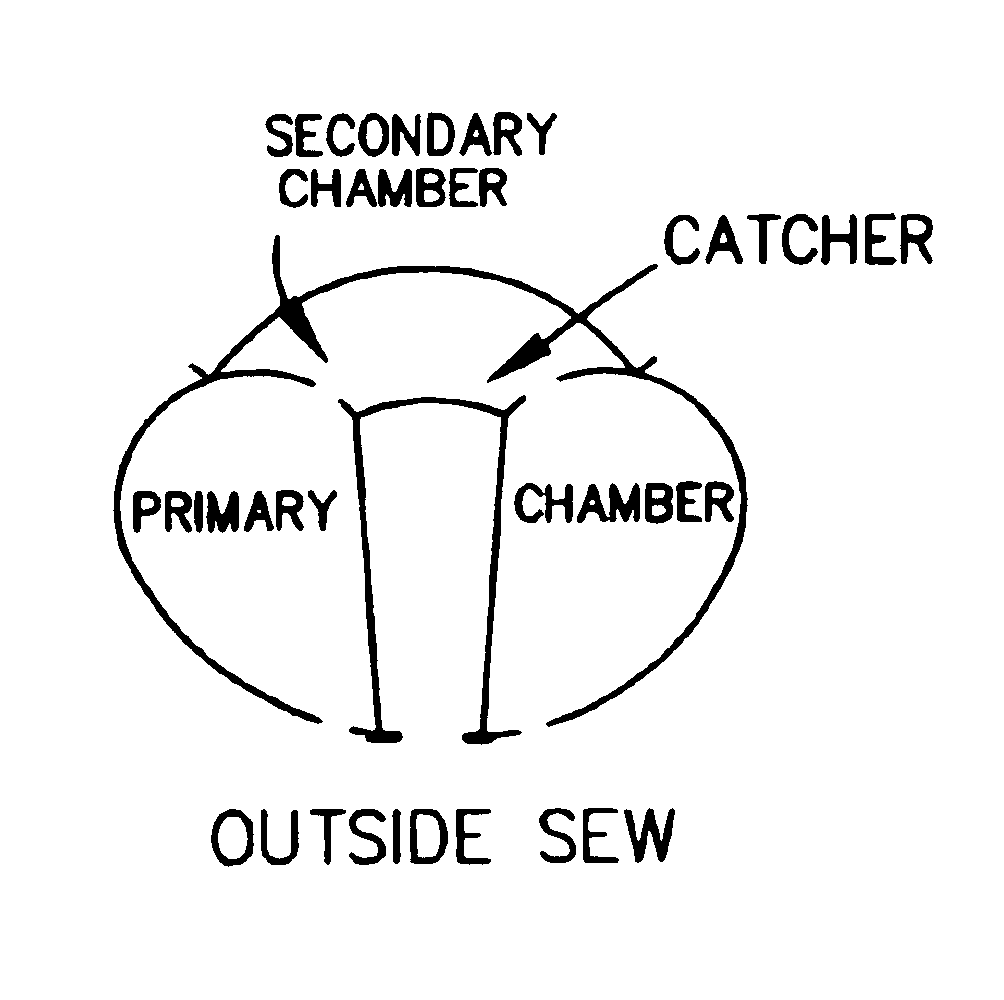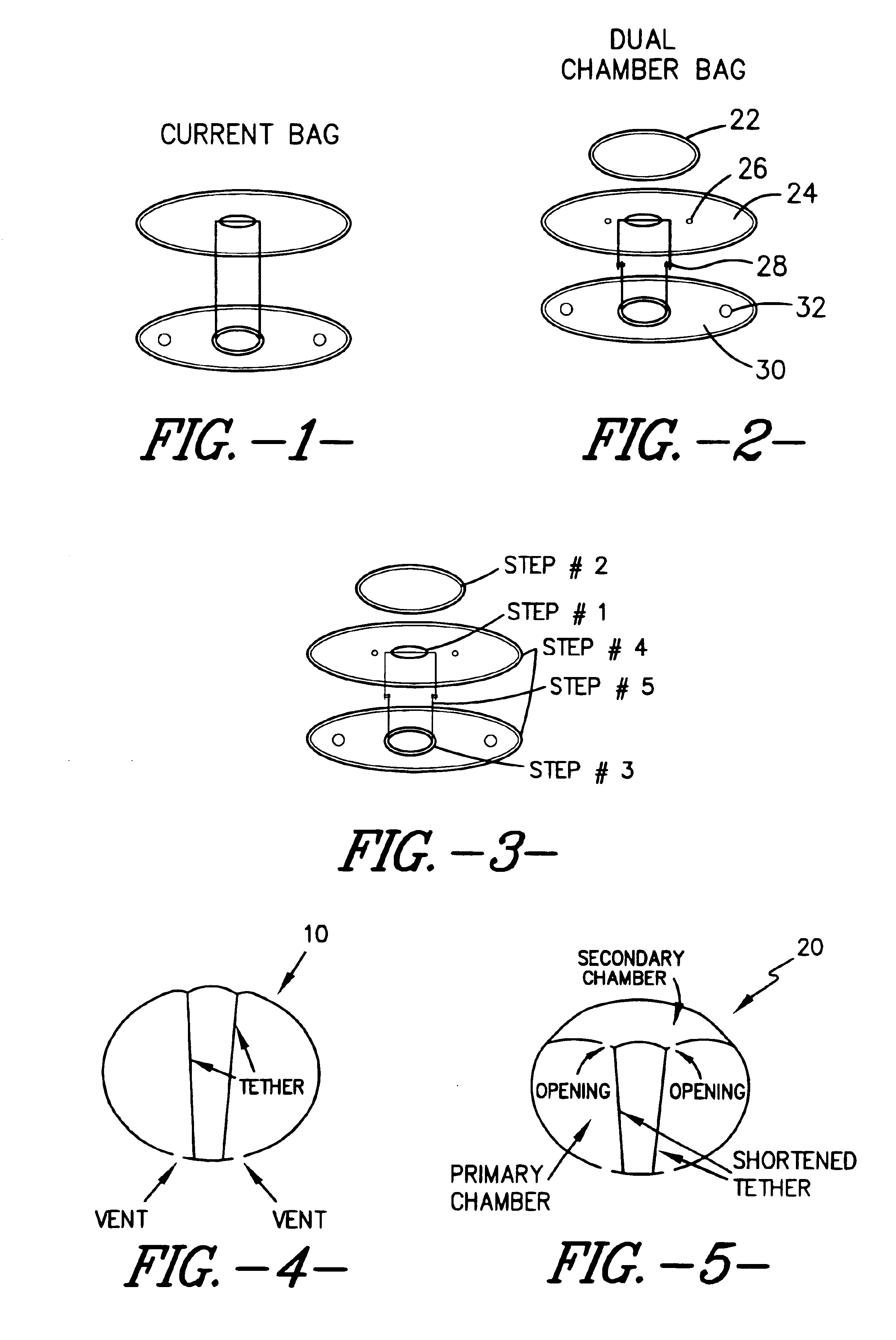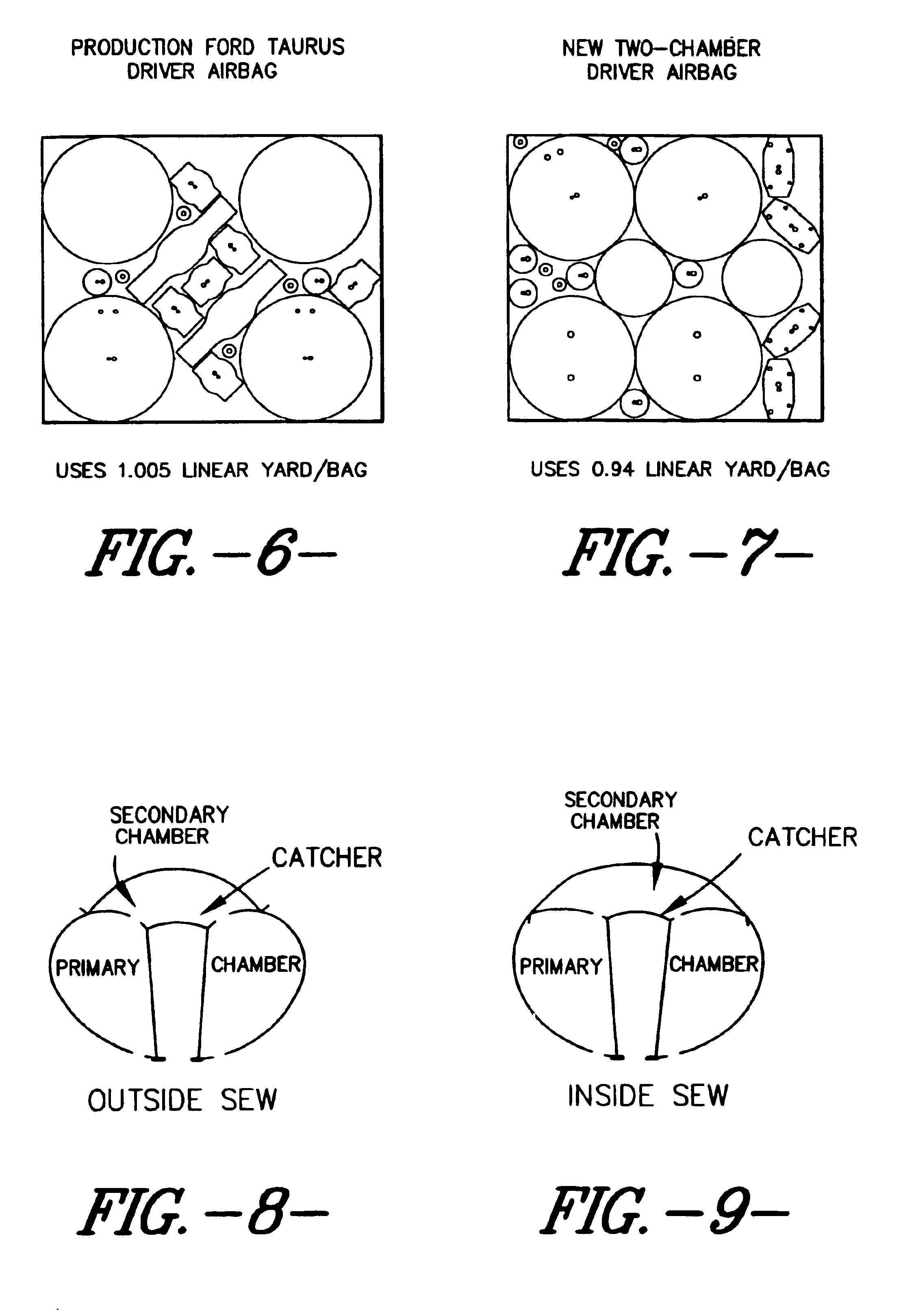Multiple chamber airbags and methods
a multi-chamber airbag and cushion technology, applied in the direction of pedestrian/occupant safety arrangement, vehicular safety arrangement, vehicle components, etc., can solve the problems of high cost of airbag fabric production, large-scale manufacturing, labor-intensive cutting and sewing operations, etc., to achieve the effect of reducing rebound, improving safety performance, and discharging the same amount of energy
- Summary
- Abstract
- Description
- Claims
- Application Information
AI Technical Summary
Benefits of technology
Problems solved by technology
Method used
Image
Examples
Embodiment Construction
[0062]Reference will now be made in detail to potentially preferred embodiments of the invention, examples of which have been illustrated in the accompanying drawings. It is to be understood that it is in no way intended to limit the invention to such illustrated and described embodiments. On the contrary, it is intended to cover all alternatives, modifications and equivalents as may be included within the true spirit and scope of the invention as defined by the appended claims and equivalents thereto.
[0063]The current single-chamber airbag (FIGS. 1 and 4) has two significant drawbacks: First, it may exert a large rebound force on the occupant after it is deployed, putting the occupant at possible risk of neck injury. Second, it may hurt rather than protect an occupant if the occupant is sitting very close to the airbag (as shorter and / or older drivers often do) when a collision occurs. The two-chamber (or three chamber) airbag of the present invention can reduce the rebound dramati...
PUM
 Login to View More
Login to View More Abstract
Description
Claims
Application Information
 Login to View More
Login to View More - R&D
- Intellectual Property
- Life Sciences
- Materials
- Tech Scout
- Unparalleled Data Quality
- Higher Quality Content
- 60% Fewer Hallucinations
Browse by: Latest US Patents, China's latest patents, Technical Efficacy Thesaurus, Application Domain, Technology Topic, Popular Technical Reports.
© 2025 PatSnap. All rights reserved.Legal|Privacy policy|Modern Slavery Act Transparency Statement|Sitemap|About US| Contact US: help@patsnap.com



